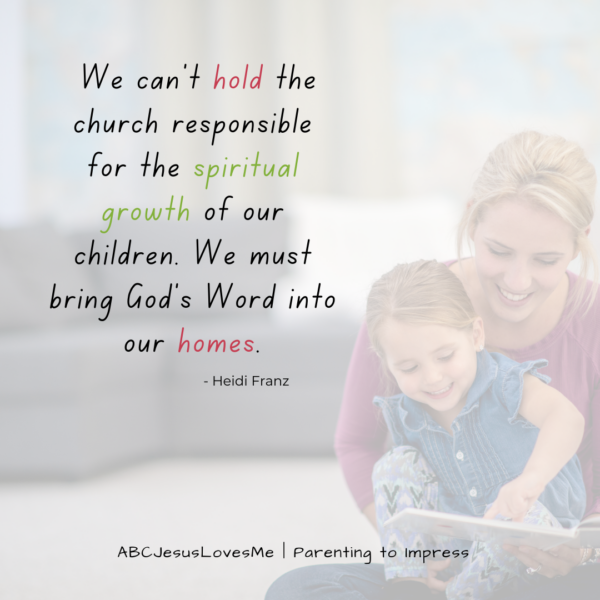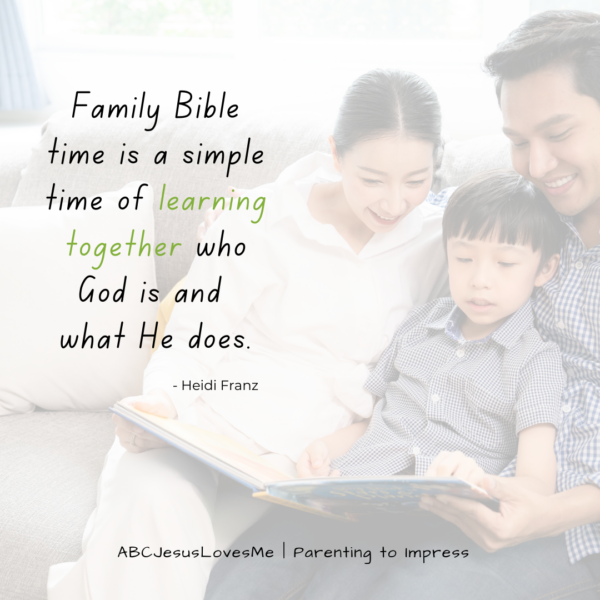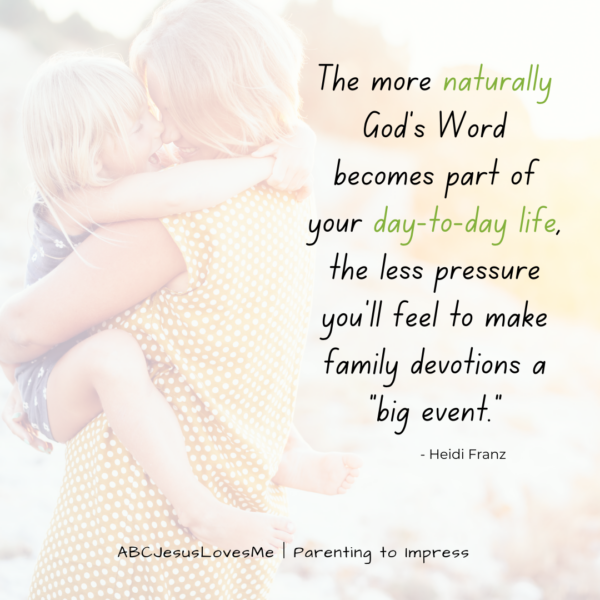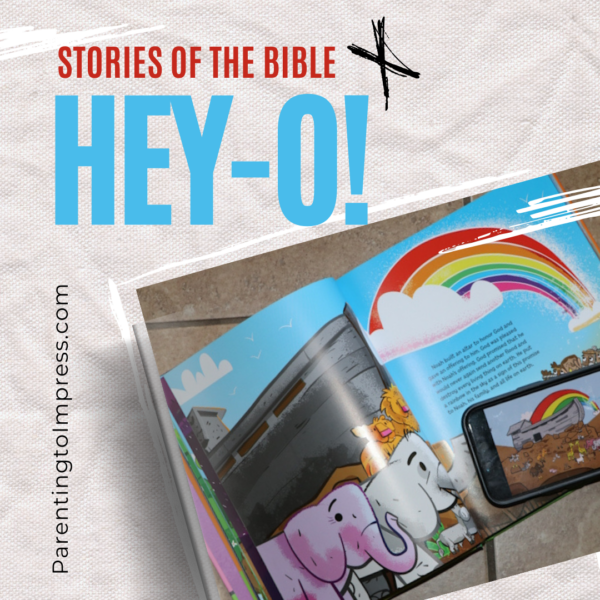Let’s do some shocking math for a moment. If your family goes to church for three hours a week, that only accounts for 1.8% of your entire week. While those three hours in corporate worship are vital, we can’t hold the church responsible for the spiritual growth of our children. We must bring God’s Word into our homes. Family Bible time is one more opportunity to consistently nurture your child’s faith beyond Sundays. You aren’t creating a mini-church service—just a simple time of learning together who God is and what He does.
Read this episode’s transcript…

Start with Prayer
Before you begin having a family devo, pray for God’s guidance. Inviting God into this time is essential because you will face distractions and discouragement. Pray for your family’s hearts to be open to what God has to teach each of you. When you start with prayer, you’re humbly acknowledging that this time belongs to God.
Setting Realistic Expectations
In honesty, family devotions may rarely be picture-perfect. Many parents imagine everyone sitting quietly, soaking in God’s Word as the litmus test for good family devos. The reality? Kids fidget, life is busy, and some nights you may only read one short Bible story. That’s okay! The goal isn’t perfection but consistency.
Family Bible time doesn’t need to be long or formal. If your day has been exhausting, read just one story and say a quick prayer. You want these to be positive experiences for your family. Some nights you might feel like doing more, but the key is flexibility. Start where your family is and build from there-just a few minutes of daily reading, praying, or singing is enough to establish the habit.
Don’t be discouraged if family devotions don’t look like you imagined. Life gets busy, and some nights it won’t happen at all. That’s okay. What matters is the long-term consistency of modeling to your children obedience to God. Even if your devotional time is brief or imperfect, your kids are learning God’s Word is a priority for your family.

Choosing the Right Bible
To begin, make sure you are using an age-appropriate Bible for your kiddos. For young ones, a Bible like The Beginner’s Bible is ideal, with short stories and engaging illustrations. As they grow, transition to a full-text Bible. Let your kids hold their own Bible to feel connected to the story. As they begin to read, involve them in reading the passages out loud.
Engage Through Active Listening and Play
Children learn best when they’re engaged. Instead of simply reading a Bible story, ask questions like, “What do you think it was like to see Jesus feed the 5,000?” Or use role-playing: grab some socks and reenact David and Goliath. If your kids are young, let them play quietly with play dough or blocks to form the characters in the story or color the appropriate Bible sheet while listening. This keeps their hands busy and minds focused. Be sure to check out the ABCJesusLovesMe Bible Curriculum for age-appropriate interactive Bible stories.

When Spouses Don’t Agree
Sometimes, you and your spouse may have different expectations about family devotionals. Pray together for unity, even if your styles differ. You don’t have to do everything the same way, but if possible be on the same page about making faith a priority.
Family Bible time shouldn’t be limited to a set time in the evening. Just as Deuteronomy 6:4-9 commands, talk about the Bible while driving, in teachable moments, or through listening to Scripture-based music. The more naturally God’s Word becomes part of your day-to-day life, the less pressure you’ll feel to make family devotions a “big event.”
What If Your Kids Resist?
In our family, attending family devotions isn’t optional, while participation can be. If your child doesn’t want to answer questions or seems disinterested, don’t force it. Instead, model excitement and joy for the time you’re spending in God’s Word. Pray that over time they’ll see the value of it through your example and the power of the Holy Spirit to change lives.
Lay a Foundation of Faith
By making God’s Word a daily part of our homes, we lay a foundation of faith that will shape our children’s hearts for years to come. It doesn’t have to be perfect or complicated—just intentional. Let’s commit to this together and watch how God works through these simple but powerful moments in our homes.

Hey-O! Stories of the Bible
For late preschool to elementary-aged children, I invite you to check out the new Hey-O! Stories of the Bible by Saddleback Kids. While I tend to favor more preschool-focused illustrations (likely because I write preschool curriculum), the blocky characters in this Bible beautifully capture emotions, enhancing the learning experience.
When reviewing children’s Bibles, I intentionally choose both specific and random stories to compare with Scripture to ensure biblical accuracy. I was thrilled to see that Hey-O! consistently aligns with Scripture, with quotes taken from key verses. Very little has been added to the stories, and when there are additions, they serve to clarify or provide background. The Bible concludes with a clear presentation of the plan of salvation.
Each written story includes access to an animated video that reads the story and brings the illustrations to life, complete with additional comments from the characters. While I strongly encourage limited screen time, these free videos can be a helpful addition to family Bible time, deepening your child’s understanding of the stories. A QR code and a simple account setup offer free access to the videos—no subscription needed. To learn more or purchase Hey-O! Stories of the Bible, visit saddleback.com/heyokids.

Thank you to Zonderkidz, Saddleback Kids, and FrontGateMedia of an opportunity to provide an honest review of this Bible.